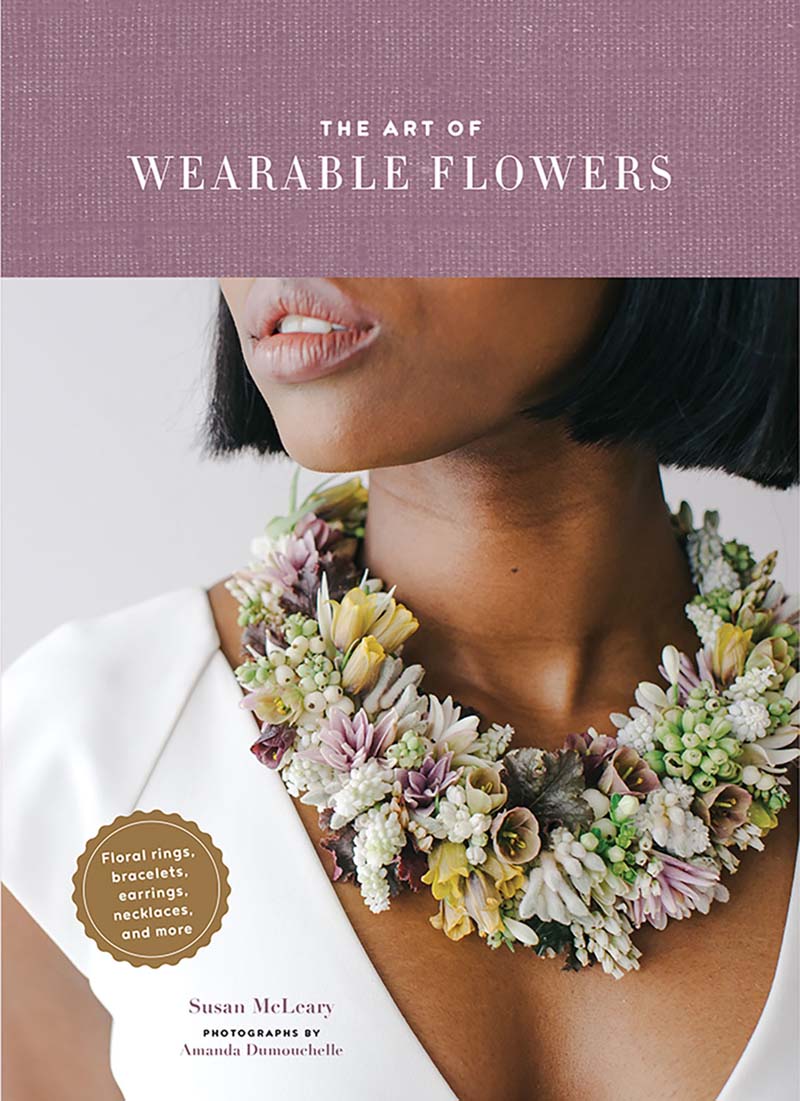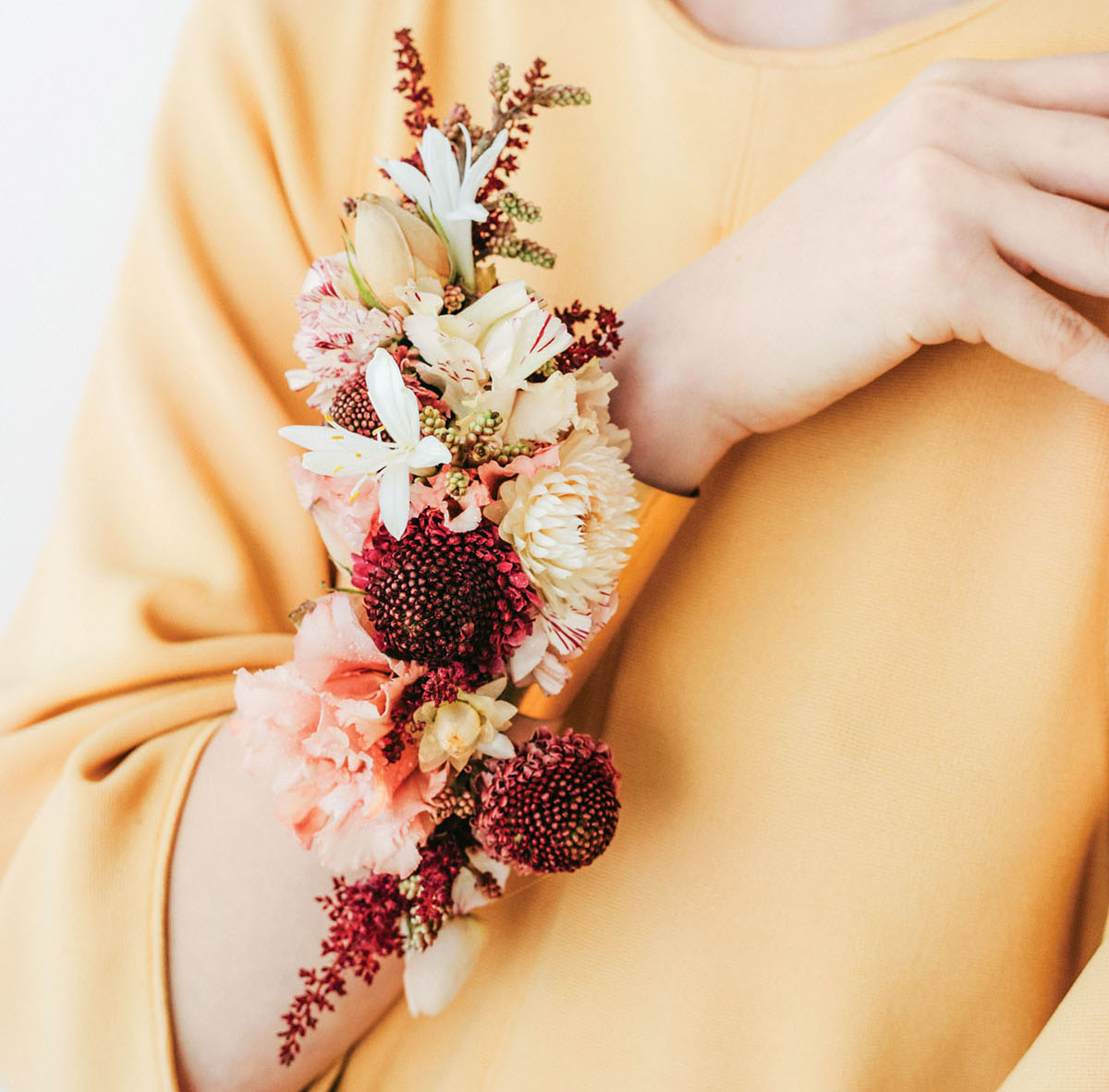
Learn how to make an artful wired cuff featuring spray roses, lisianthus, carnations, rose sumac, and scabiosa in an excerpt from The Art of Wearable Flowers by Susan McLeary (Chronicle Books 2020)
This stylish corsage is currently my favorite to make. Over the last several years, I’ve enjoyed sharing my cuff corsage techniques. Students have overwhelmingly embraced the look of these sleek floral bracelets, and they’ve found that using floral adhesive to attach the floral components is efficient and secure. However, some say that while they love the look of these pieces, they miss the control and extra stability that traditional wiring offers. I’m pleased to share a way to marry the sleek look of a cuff corsage with the security and control of wiring. I used a simple brass cuff with a center swedge hole for this project, but any sturdy cuff-style bracelet with at least one hole in its surface will work well.
FLORAL CUFF TUTORIAL

MATERIALS*
- 24-gauge floral wire
- 1 or 2 stems ‘Earth’ spray roses
- 2 or 3 stems peach lisianthus
- 1 or 2 stems variegated carnations, petals removed
- 1 or 2 stems rose sumac
- 5 to 7 stems raspberry scabiosa
- 1 (3/4-inch) self-adhesive felt pad
- 1 chenille stem
- 3-inch brass cuff with a center swedge hole
- Stem wrap tape
- UGlu tabs or sturdy double-sided tape
- Floral adhesive (optional)
STEP 1
Wire the spray roses and lisianthus using the piercing technique; the carnation petals and rose sumac using the cranking technique; and the scabiosa using the insertion technique. (Find Susan’s wiring techniques here.)
STEP 2
To create the attachment platform for the corsage, carefully pierce two holes through the felt pad. Bend the chenille stem into a slender U shape, and feed it through the holes so the free ends of the chenille stem emerge on the adhesive side of the felt pad.
STEP 3
Peel off the felt pad’s paper backing, and feed the ends of the chenille stem through the hole in the corsage base. Pull to snug up the chenille stem, and twist the ends to secure it. This will be the attachment point for the wired component of the corsage.
STEP 4
Add UGlu tabs to the corsage base on either side of the central attachment point. This makes the piece more secure.
STEP 5
To create the wired floral component of the corsage, start with the most tapered element—the rose sumac. Using stem wrap tape, add a carnation petal bundle, placing it below the sumac so its ruffled petals cover the taped portion of the sumac stem.

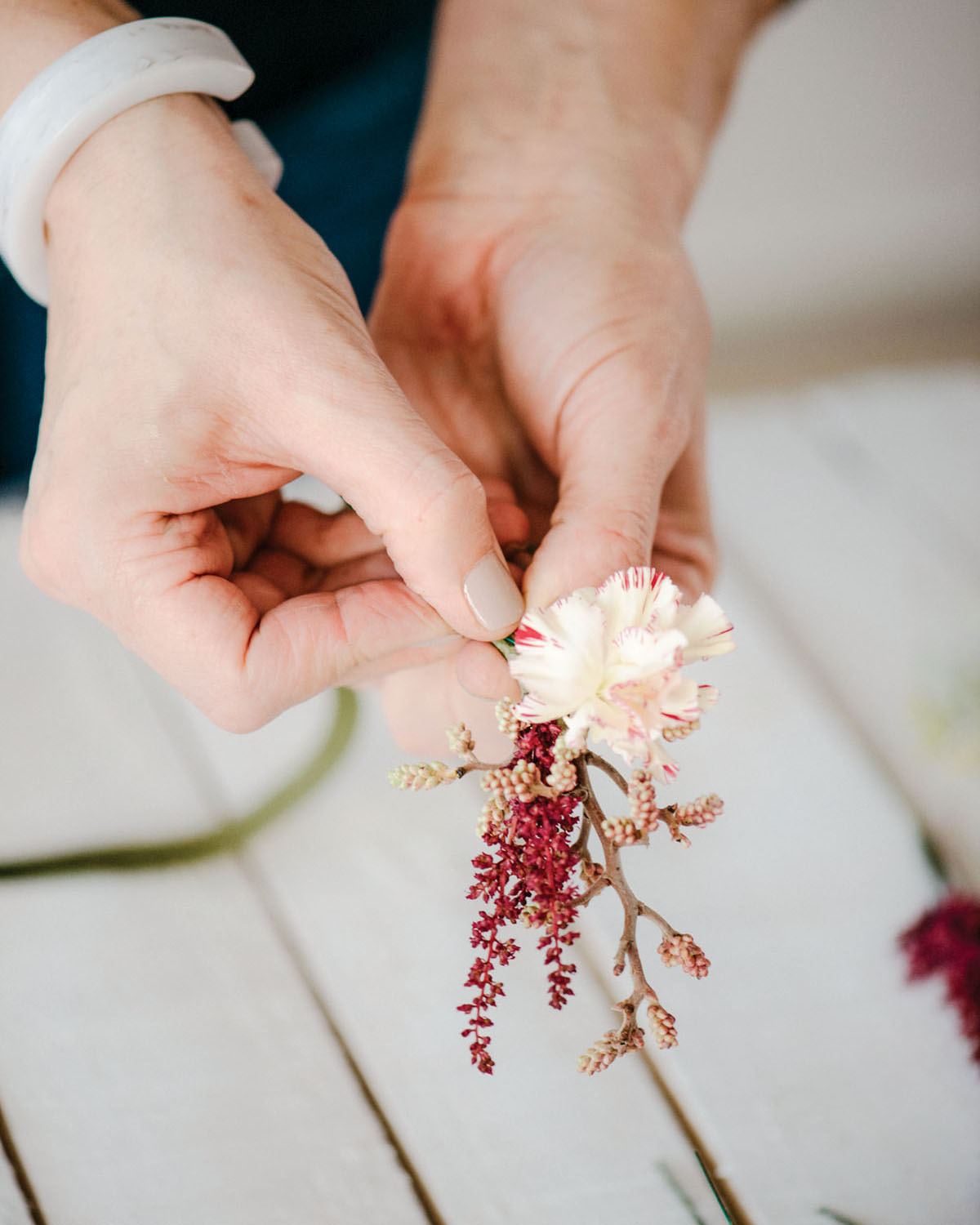
STEP 6
Add the next-largest component, a spray rose, again staggering the placement so the head of the flower covers the stem end of the one previous.
STEP 7
Add more blooms, using increasingly larger sizes until you reach the center of the piece. As you place them, gently bend the wire to orient the stems slightly left and slightly right so the design is finished looking from all sides.
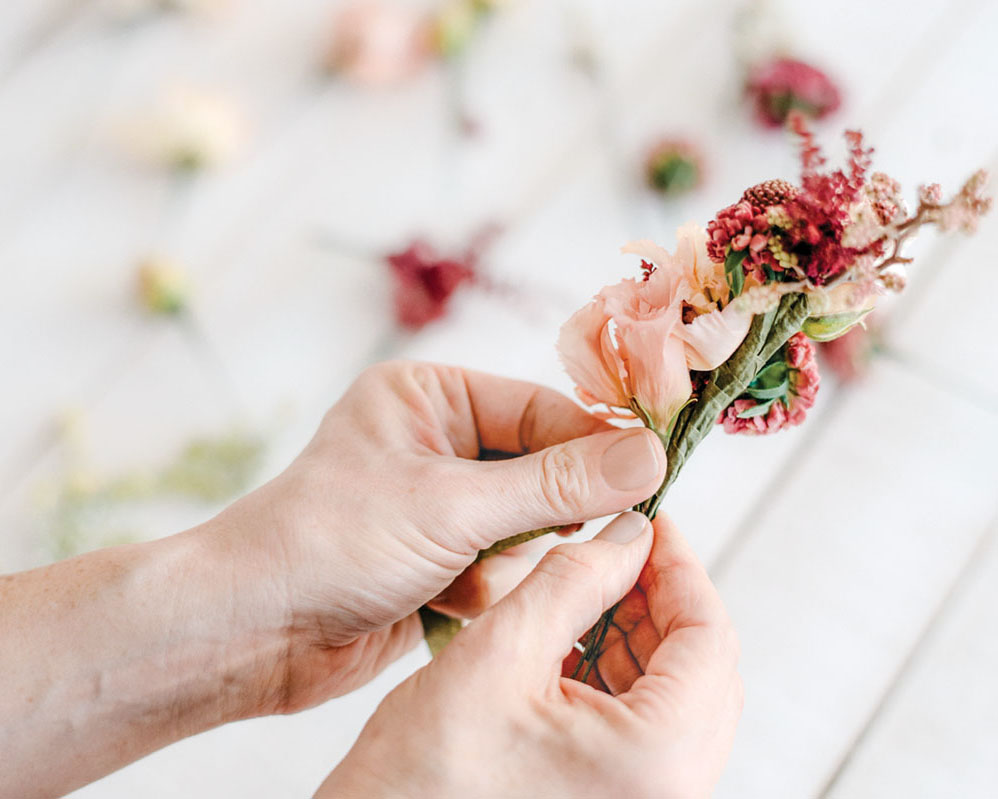
STEP 8
Now choose increasingly smaller components until you reach the end of the piece. You can choose how long to make the wired piece—perhaps cascading off the cuff a few inches on either side.
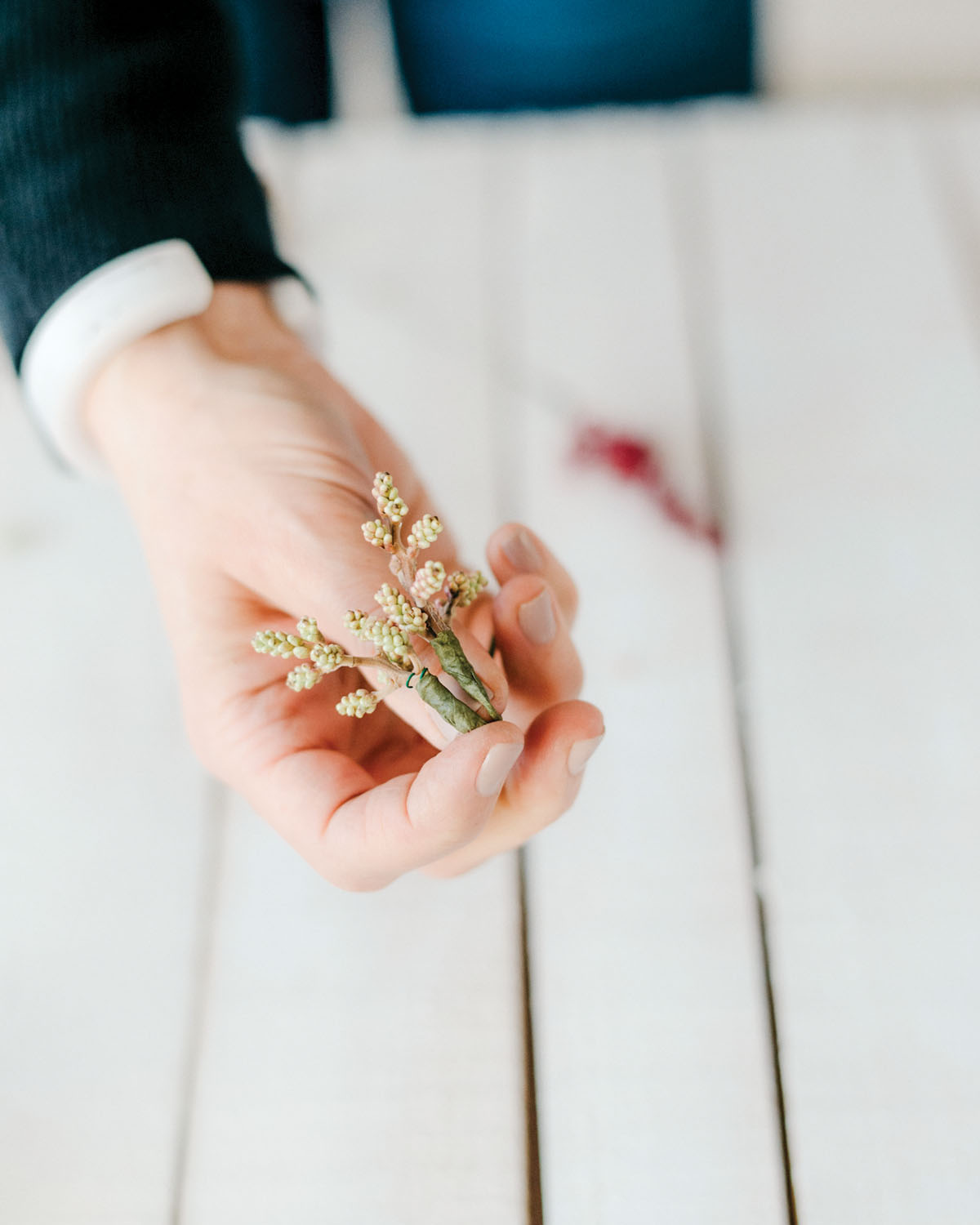

STEP 9
When you reach the end of the piece, choose a final stem to finish the design and conceal your mechanics. Bend the wire at the base of the bloom completely to meet the wired stem. Tuck it in tightly to finish the design.

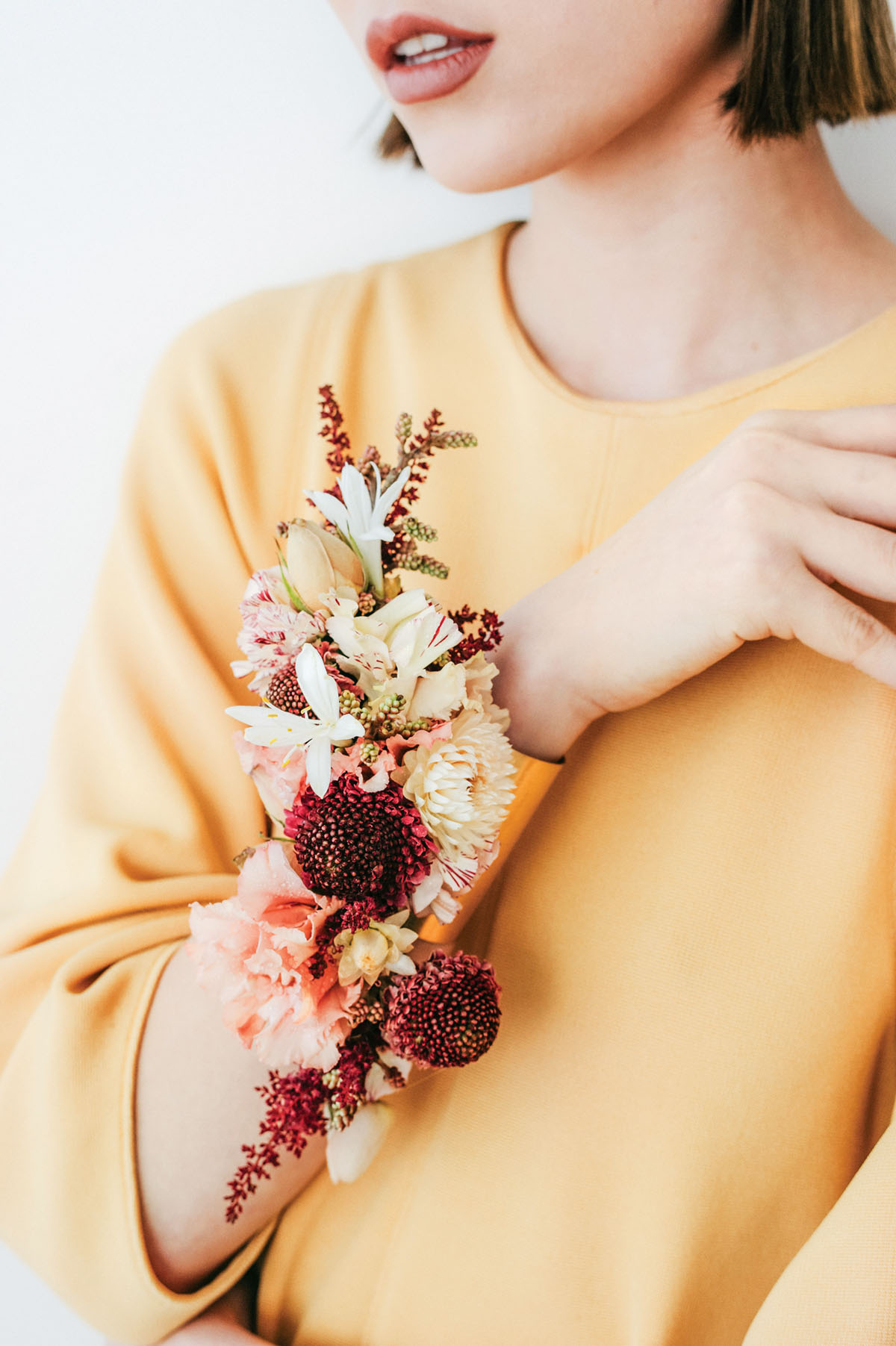
STEP 10
If the design has gaps, or tape is visible from the sides of the piece, use floral adhesive to easily add finishing details where needed.

Susan McLeary, author of The Art of Wearable Flowers
MORE FROM SUSAN MCLEARY
This tutorial is featured in the September/October 2021 issue of Flower magazine. Subscribe or find a copy in a store near you.

